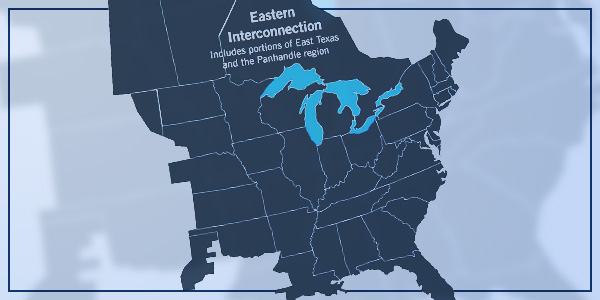By Michael Brooks
Transmission planning in the Eastern Interconnection is well-coordinated among its planning authorities, ensuring NERC reliability requirements are met, according to a report released Wednesday by the Eastern Interconnection Planning Collaborative (EIPC).
The “State of the Eastern Interconnection” doesn’t get into the nitty gritty. At only 21 pages, it summarizes EIPC’s efforts since its formation in 2009 to examine the interconnection from the bottom up and ensure that planning coordinators’ individual regional transmission plans do not conflict with each other.
“The EIPC has completed a comprehensive description of Eastern Interconnection Planning Collaborative activities over the last decade, including results from its studies and analyses on the regional transmission plans of the major systems that make up the Eastern Interconnection,” said Stephen Rourke, vice president of system planning for ISO-NE and chairman of the EIPC Executive Committee. “The report details how the Eastern Interconnection grid is being planned in a coordinated manner, facilitated in part by the work of the EIPC.”

The Eastern Interconnection also includes the Canadian Maritime provinces: New Brunswick, Nova Scotia and Prince Edward Island. | ERCOT
EIPC is made up of 20 planning coordinators — including the five Eastern RTOs — in FERC-designated planning regions: the RTOs’ territories, the Florida Reliability Coordinating Council, South Carolina Regional Transmission Planning and Southeast Regional Transmission Planning. FERC Order 1000 only requires pairs of neighboring regions to coordinate their planning. SPP and MISO work together, for example, as do MISO and PJM — but PJM and SPP do not.
“EIPC efforts provide an additional forum to complement interregional coordination of the combined plans of the regional planning coordinators from an interconnection-wide basis,” according to the report. “While reliability requirements are achieved in the first instance at the regional level through regional processes, the work undertaken at EIPC confirms that the regional plans mesh properly into a combined plan for the interconnection.”
The heart of the collaborative’s work are its two “roll-up” studies, which involved combining the individual regional plans and their underlying data, such as resource mix and projected demand, into an integrated, interconnection-wide model.
The first study was conducted in 2014 for the summer peak hours in 2018 and 2023. The second, released in 2016, covered the 2025 winter and summer peaks.
As part of the latter study, EIPC identified several interconnection-wide power-flow interactions resulting from the regional plans that could cause constraints, leading planning coordinators to develop “conceptual upgrades” for inclusion in future planning cycles.
Another analysis in the study to locate potential constraints simulated 5,000-MW transfers between regions.
“The roll-up analyses demonstrate that the respective planning coordinator transmission planning and interconnection processes, which explicitly include requirements for coordination, have yielded transmission plans that are well coordinated on a regional and interconnection-wide basis,” the report says.



